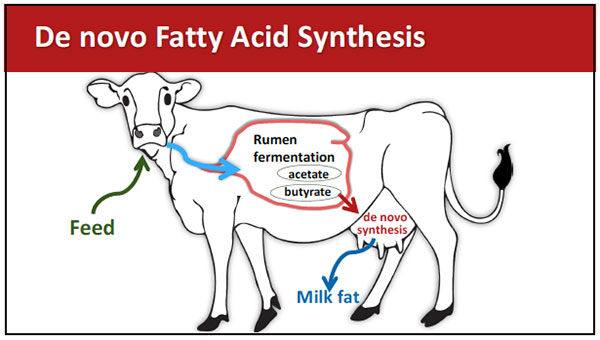
Barbano’s background leans more to the food science side of dairy production. However, his investigations could help us fine-tune feeding and handling of our cows and result in higher and more consistent cheese yields.
Barbano and his team worked a number of testing labs and milk from hundreds of Holstein and Jersey herds. Using milk analyzers that are becoming more common, his data focused on levels of de novo fatty acid levels in milk. De novo fatty acids are those made within the mammary system. The equipment also simultaneously tested mixed performed fatty acids chain length, unsaturation, blood NEFA, and MUN levels.


This was the case with Holstein herds. And the difference for Jersey herds was even greater. Milk production, itself, was not affected so the levels of total components per 100 pounds of milk were higher.
And with those higher components, producers, depending on breed, would see between $8,500 and $15,600 more income each year for every 100 cows.
Barbano and his team did some survey work to determine what might be affecting de novo fatty acid levels. It looks like stress is involved. De novo fatty acid levels were lower among herds that were overcrowding free stalls by 10 percent or more and providing less than 18 inches of bunk space per cow.
A high level of de novo fatty acids in milk indicates that rumen fermentation is working well and that all volatile fatty acids (VFAs) are being produced in the rumen in adequate quantities. Hence, de novo fatty acid testing is also an excellent evaluation tool for determining rumen fermentation and forage digestion.
By monitoring de novo levels in milk, the effectiveness of multiple inputs can be evaluated – feed quality, cow health, housing conditions, and milk output. Finding cows with low levels would necessitate a closer look at cows that may have once been overlooked.

The author is the online media manager and is responsible for the website, webinars, and social media. A graduate of Modesto Junior College and Fresno State, she was raised on a California dairy and frequently blogs on youth programs and consumer issues.
Join us next month

Have you ever wondered why some herds have few mastitis cases and others have many? In this webinar, Paul Virkler, D.V.M., Cornell University College of Veterinary Medicine, will outline some differences and explore how you can evaluate your dairy, looking for opportunities to prevent this costly disease. The webinar is sponsored by Acumen Detection.








